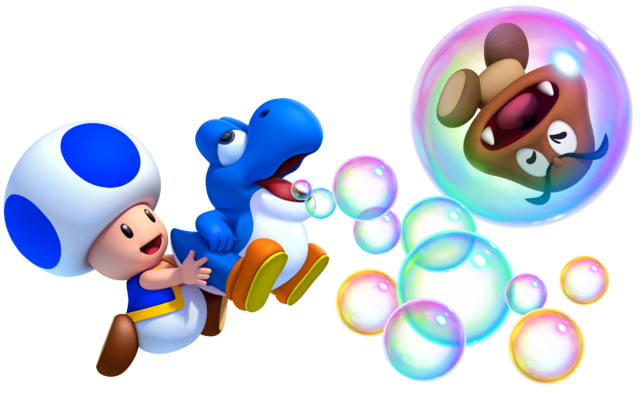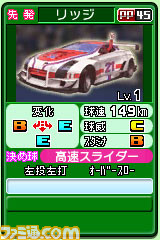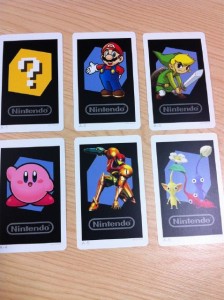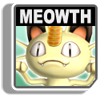Post by Da Robot on Feb 3, 2011 2:34:57 GMT -5
More Iwata Asks N3DS edition . . . Finally asks the question of "why the 3 layer design?"

Ehara: The Nintendo 3DS system not only has the StreetPass, but also SpotPass. We wanted to represent through the design how all kinds of content would come in, not just when you went out walking around with it, but also when you just had it sitting at home.
Ehara: There were also reasons of functionality for having three layers. For the top layer, we want players to open their Nintendo 3DS system very often, so in order to make it easy to open, we wanted to use a distinct reverse taper.

Iwata: A reverse taper is like an upside-down trapezoidal cube.
Ehara: Yes. By boldly using that shape for the top layer, without having to add in a niche for your finger, you could easily open the lid at any point along its edge. For the second layer, it was decided to put a sound volume slider and LED lights on the side, so in order to avoid accidentally hitting buttons when operating the system or carrying it around, we decided to concentrate them on that single layer and make the whole layer a bit of an indentation, which would make the top layer even easier to open.
Iwata: So that’s why the second layer is tucked in a bit.
Ehara: Right. Then for the bottom layer, I wondered if we could adopt something like the sign system at airports. I thought putting icons or lettering on the third level for the buttons and LED lights on the second level would be a good way to make everything clear to users.
Iwata: But the top layer was a problem.
Ehara: Yeah. The first point of design was the top. We wanted to express the character of the Nintendo 3DS system, how data came in and the graphics have depth, through the three gradations of color, texture and depth—the color gradually darkened, the shine gradually increased, and a feeling of depth gradually came out. What’s more, we designed it to have a variety of expressions, so to speak, so that depending on the angle you view it from, the lines of the clear layer appear and disappear and you see things deep in. We thought we could give it an entirely different texture than previous Nintendo DS models. When we made the presentation, I started by saying, “I don’t know if we can actually make this, but…” I was suggesting something that required a disclaimer!
Street Fighter IV is being published by Nintendo in Europe and Australia and will also be handling sales, marketing and distribution.
Source.

Ehara: The Nintendo 3DS system not only has the StreetPass, but also SpotPass. We wanted to represent through the design how all kinds of content would come in, not just when you went out walking around with it, but also when you just had it sitting at home.
Ehara: There were also reasons of functionality for having three layers. For the top layer, we want players to open their Nintendo 3DS system very often, so in order to make it easy to open, we wanted to use a distinct reverse taper.

Iwata: A reverse taper is like an upside-down trapezoidal cube.
Ehara: Yes. By boldly using that shape for the top layer, without having to add in a niche for your finger, you could easily open the lid at any point along its edge. For the second layer, it was decided to put a sound volume slider and LED lights on the side, so in order to avoid accidentally hitting buttons when operating the system or carrying it around, we decided to concentrate them on that single layer and make the whole layer a bit of an indentation, which would make the top layer even easier to open.
Iwata: So that’s why the second layer is tucked in a bit.
Ehara: Right. Then for the bottom layer, I wondered if we could adopt something like the sign system at airports. I thought putting icons or lettering on the third level for the buttons and LED lights on the second level would be a good way to make everything clear to users.
Iwata: But the top layer was a problem.
Ehara: Yeah. The first point of design was the top. We wanted to express the character of the Nintendo 3DS system, how data came in and the graphics have depth, through the three gradations of color, texture and depth—the color gradually darkened, the shine gradually increased, and a feeling of depth gradually came out. What’s more, we designed it to have a variety of expressions, so to speak, so that depending on the angle you view it from, the lines of the clear layer appear and disappear and you see things deep in. We thought we could give it an entirely different texture than previous Nintendo DS models. When we made the presentation, I started by saying, “I don’t know if we can actually make this, but…” I was suggesting something that required a disclaimer!
Street Fighter IV is being published by Nintendo in Europe and Australia and will also be handling sales, marketing and distribution.
Source.
















